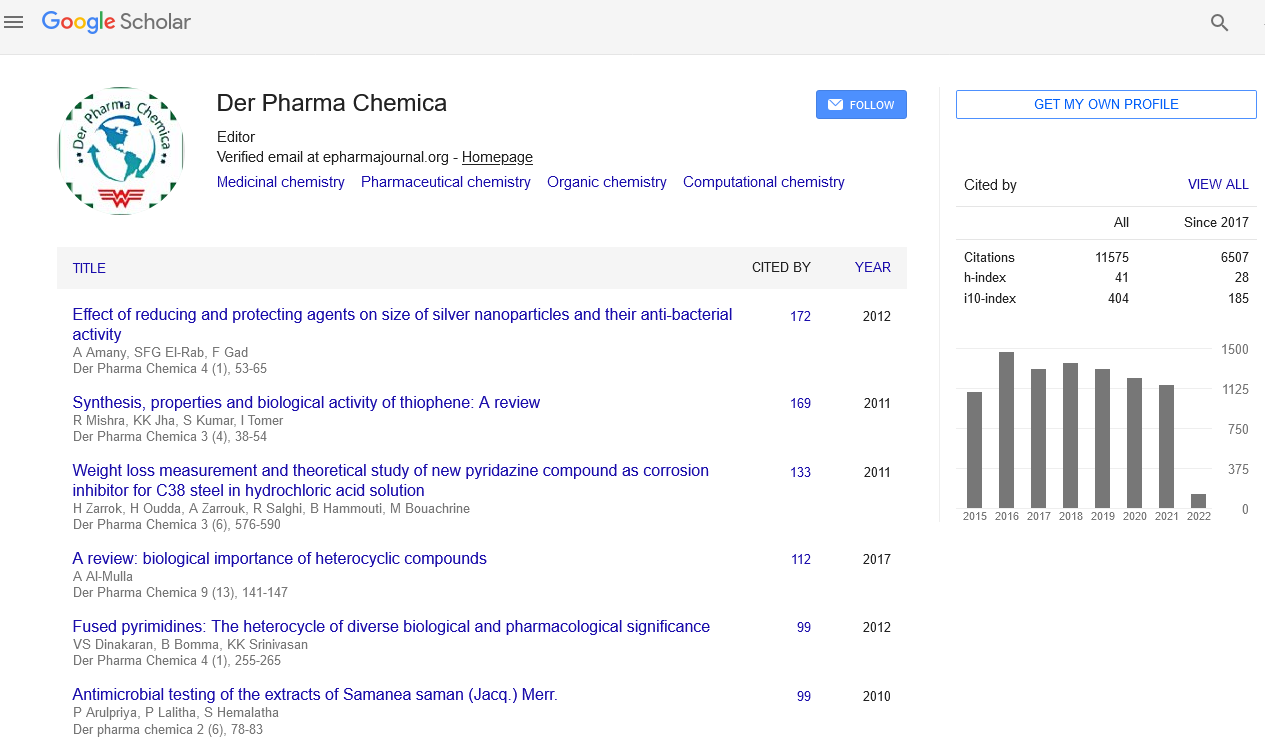Abstract
Antioxidant Activity and Minimum Inhibitory Concentration of the Crude Methanolic Extract of Caesalpinia pulcherrima (L.) Swartz
Author(s): Angelina A. Atienza, Erna C. Arollado, Richelle Ann M. Manalo, Leslie B. Tomagan and Gerwin Louis T. Dela TorreThis study was conducted to determine the antioxidant and antimicrobial activity of the leaves, flowers and seeds of Caesalpinia pulcherrima L.(Swartz) methanolic extracts. The methanolic extracts were subjected to qualitative phytochemical screening, minimum inhibitory concentration (125, 250, 500 and 1000 μg/mL) and antioxidant activity by 2,2-diphenylpicrylhydrazyl assay (DPPH, 50, 100, 250, 400 and 800 μg/mL). All the extracts showed potent antioxidant activity at 800 μg/mL concentrations comparable to the ascorbic acid standard (p values: leaves=0.088, flowers=0.102, seeds=0.056). For the antimicrobial activity, the leaf extracts showed inhibition against all the selected microorganisms, Staphylococcus aureus, Pseudomonas aureginosa, Escherichia coli, Enterococcus faecalis, Streptococcus mutans, Bacillus subtilis, Aspergillus niger and Candida albicans, at 1000 μg/mL. These activities can be attributed to the phytochemicals present in the extracts including carbohydrates, reducing sugars, flavonoids, phenols, tannins, alkaloids and triterpenoids. In conclusion, all the C. pulcherrima plant parts used possess antioxidant activity while the leaves have potent antimicrobial activity against the selected microorganisms. These results can be used to utilize this plant as a potential source of new antioxidant compounds and antimicrobial agents for several infectious diseases, particularly in endodontic infections where microorganisms such as C. albicans and E. faecalisare dominant pathogens.
Select your language of interest to view the total content in your interested language
Google Scholar citation report
Citations : 25868
Der Pharma Chemica received 25868 citations as per Google Scholar report
Der Pharma Chemica peer review process verified at publons
DOWNLOADS




